How to Clean Wood Siding in 4 Easy Steps - Cedar Siding Maintenance
Learn how to clean and prep cedar siding using oxygen bleach and oxalic acid. This is a great read if you're looking to learn how to prevent mold from forming on your cedar siding. If you’re looking to buy cedar siding (or wood siding in general) but first want to learn about cedar siding maintenance so that you can better understand the cedar siding pros and cons, read on, because understanding how to maintain cedar siding is an important part of the equation!
Understanding maintenance of wood siding is crucial to your decision to purchase wood siding for your home. Proper maintenance ensures the best longevity and performance of the wood.
Cedar siding is our specialty – we sell an awful lot of it. How to clean it is a question we get all the time. These cleaning instructions work for redwood and all other species of wood, as well.
There are two types of cleaning. Deep cleaning, required when it’s time to refinish your siding with clear coat or stain. And, general cleaning, for the once-a-year Spring or Autumn cleaning to brighten and refresh your cedar’s appearance, no matter the finish type.
For either cleaning method, you should choose a cloudy day or a mild spring or autumn day, as strong summer sun could dry the cleaning solution before you’re able to scrub or rinse properly. Work in small, manageable sections.
We recommend that you follow these four steps to clean and prep your cedar siding.
Deep Cleaning Cedar Siding Instructions – In 4 Easy Steps
Deep clean using oxygen bleach and oxalic acid to clean and prep cedar siding for refinishing.
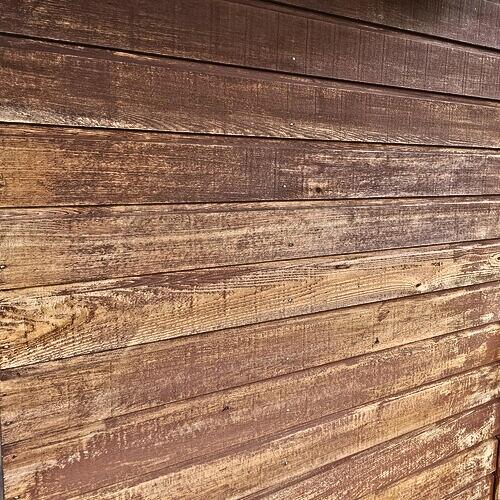
This deep cleaning method is used if the current finish on your siding is an oil-based or hybrid (water borne/oil-base) clear coat or stain product; it WILL NOT remove a water-based finish product.
A 100% water-based wood finish product is film-forming and chemically bonded to the surface of your wood, requiring a chemical stripper to remove it before refinishing.
However, once you’ve stripped the water-based stain you can refinish your wood siding with an oil-based or hybrid stain for easier deep cleaning next time.
Step 1 - Remove Loose Surface Dirt from Wood Siding
The first step is to remove loose surface dirt and debris with water using either a pump sprayer or garden hose with a decent spray nozzle. Removing loose debris allows the cleaning solution to make contact with and coat all of the wood’s surface for even cleaning.
Scroll down to our notes about using a power washer before using one on your wood siding!
Step 2 - Apply Oxygen Bleach
Next, while the wood is wet, apply oxygen bleach to your siding. It neutralizes organic material, breaking down algae, mold, and mildew, and removes the old, sun damaged sealer or stain. Oxygen bleach is safe to use around plants, humans, and animals. It doesn’t remove or change the natural color of the wood.
I recommend the brand STAIN SOLVER for two reasons. It has the most active ingredients and is 100% made in the USA. Brands made overseas contain filler ingredients that aren’t necessary for the cleaning process.
Follow the package instructions, mixing the solution in a bucket or sprayer. If the wood is extra dirty or has a lot of mold, mildew or algae, you can increase the amount of dry oxygen bleach by half again or double it. This may keep you from repeating the full scrubbing process a second time.
Apply liberally to the wood siding, starting at the bottom and moving to the top. The solution will fizz and bubble as it makes contact with the wood.
While the solution is wet, using a soft-bristled brush, scrub the cedar siding from the top moving downward to prevent streaking.
After scrubbing, let it set for 10-15 minutes then rinse it thoroughly. You want all of the oxygen bleach rinsed away.
A before and after application of oxygen bleach:

After:
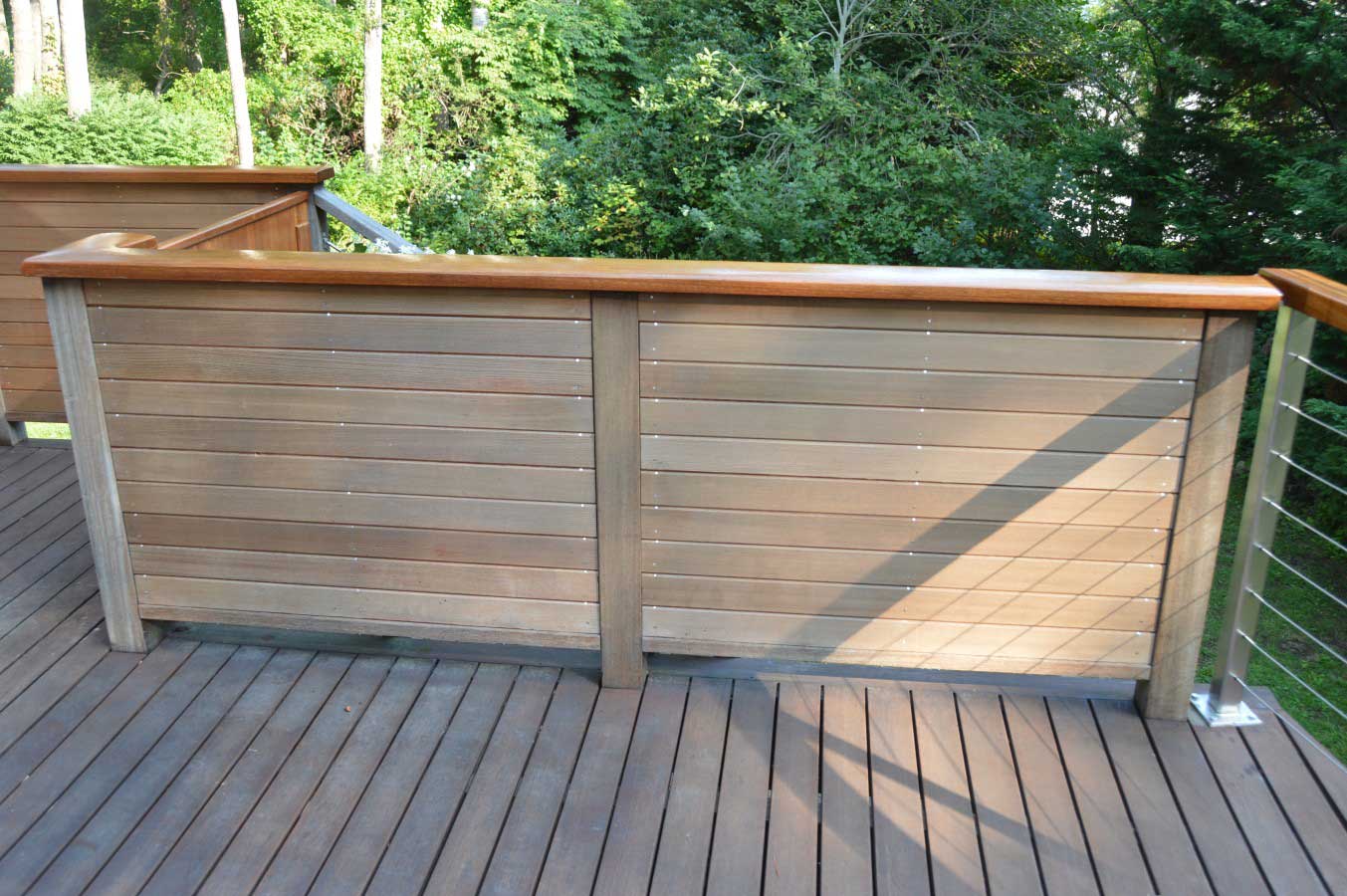
Step 3 - Apply Oxalic Acid
The third step is applying an oxalic acid solution while the wood is wet from the previous rinse.
Oxalic acid conditions your wood to receive the new finish, helping it to better adhere to the wood. It removes rust/iron stains and any water stains and tough black mold stains that didn’t clean off with the oxygen bleach. It removes damage and graying caused by UV weathering – aids in restoring wood’s natural color. 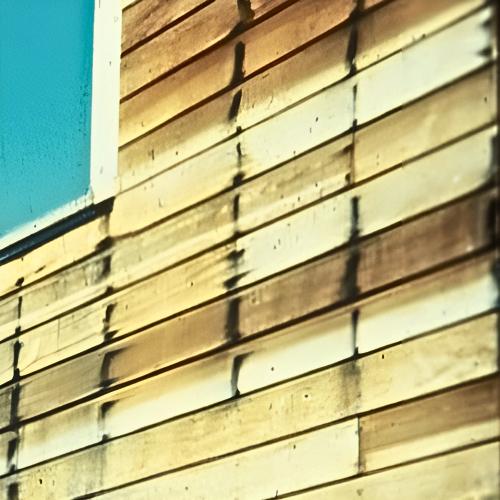
I have not encountered a specific brand of Oxalic Acid that sets itself apart from the rest so just go with any recommendations by your local paint store. If I find one, I'll give an update so be sure to regularly check out our websites Buffalo Lumber and Buffalo Lumber Community. Connect with us on social media, as well, to receive more tips.
In a bucket, mix the oxalic acid per package directions for cleaning wood. Apply with a sponge, mop, or paint brush from bottom to top. Scrub from top to bottom to prevent any streaking.
Let it set 10-15 minutes then rinse thoroughly until no white residue shows. Badly stained areas may need to be cleaned more than once.
After applying Oxalic Acid:
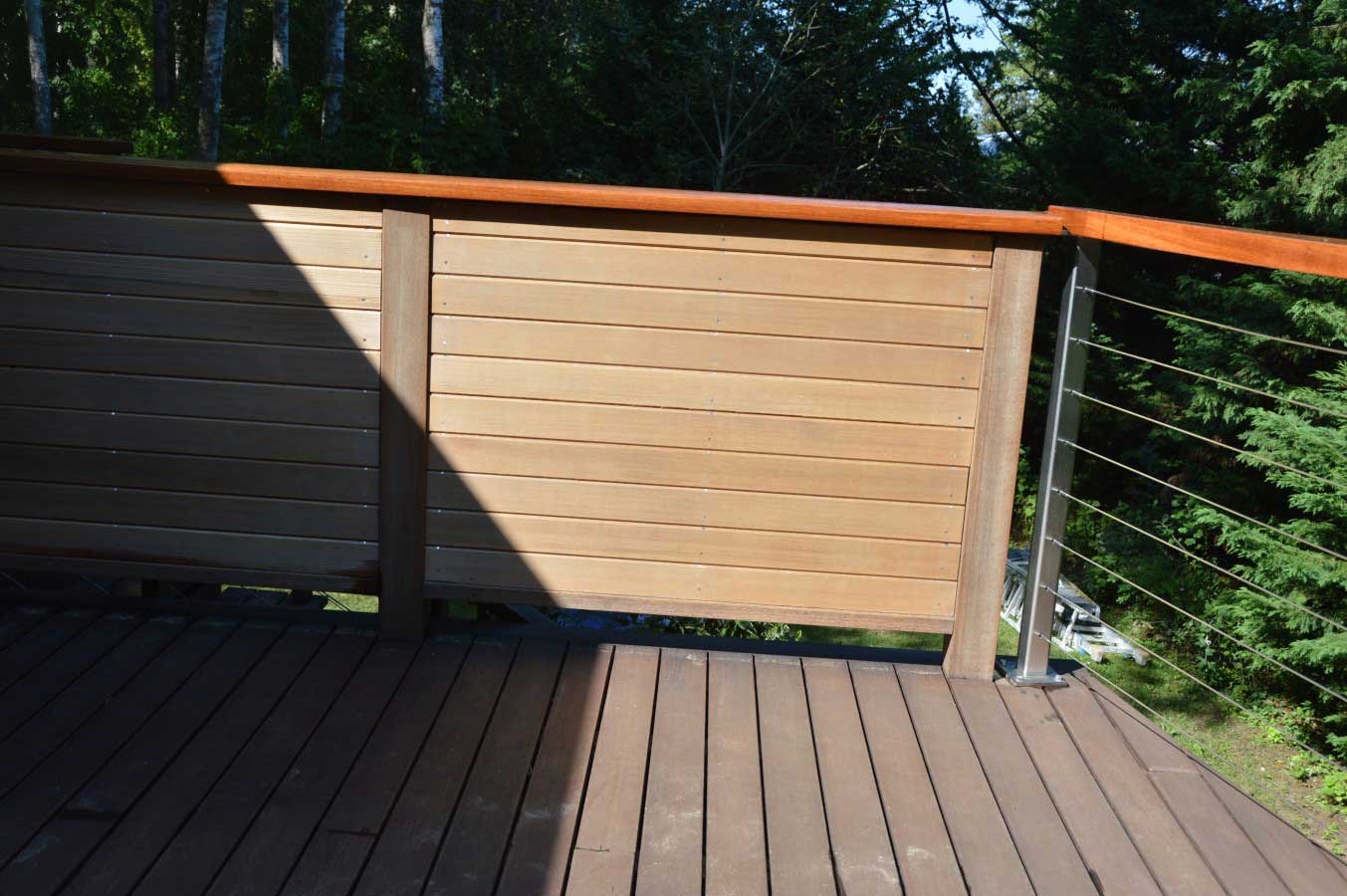
Step 4 - Finish by re-staining the cedar siding
The fourth and final step is refinishing. When the moisture content reaches 15%, your exterior cedar siding is ready for stain. To measure the moisture level, use a moisture meter available at local hardware stores.
When selecting the right stain to use, select a stain that will achieve the level of penetration that allows you to use these same steps to clean your siding in the future. Water-based stains require toxic strippers and a more laborious process for cleaning.
We recommend Defy Oil-based Wood Stains because it can be cleaned using Defy's environmentally friendly wood cleaner. But regardless of the brand, it is always a good idea to check with the manufacturer’s tech department and ask for their recommended cleanup process and possible labor cost. Also, every state has different laws of what they can or cannot sell with stains based on their chemicals contents.
For vertically installed siding, apply stain starting at the top going down; staining an entire course without overlapping the stain. This helps to manage drips and streaks.
For horizontally installed siding, start at the top corner moving across. Again, avoid overlapping.
After re-staining:
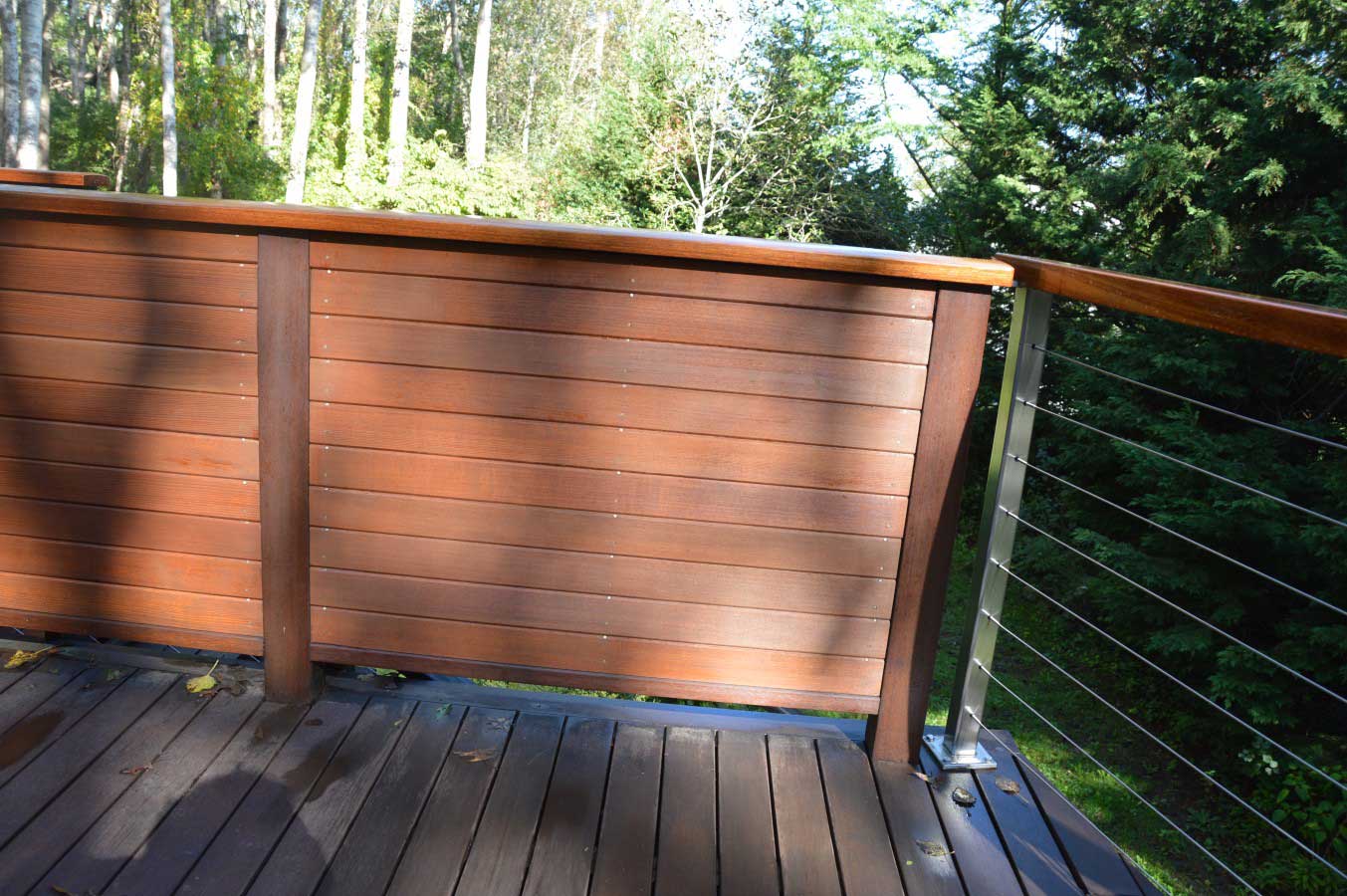
General Cleaning Instructions
We always suggest you inspect and clean your wood siding once each year. A General Cleaning will remove dirt and grime, freshen and brighten your wood siding without removing the finish. Dirt, grime, and air borne debris break down the finish on your siding. Cleaning it will give it the longest performance life.
Use a weak solution of oxygen bleach. We suggest approximately one-half of the product called for on the package instructions. The goal, here, is to clean the wood without removing the finish.
First, remove loose surface dirt with water using either a pump sprayer or garden hose.
Next, while the wood is wet, using a sprayer, apply the weakened solution of oxygen bleach liberally to the wood siding, starting at the bottom and move to the top. Then wash the wood, starting from the top, moving to the bottom to avoid streaks. Scrubbing should not be necessary for a General Cleaning. Rinse thoroughly several times.
If a few black spots remain they can be spot cleaned with a slightly stronger solution of oxygen bleach. It should clean the black spots off without really removing the finish if the finish still retains its integrity.
Painted Cedar Siding
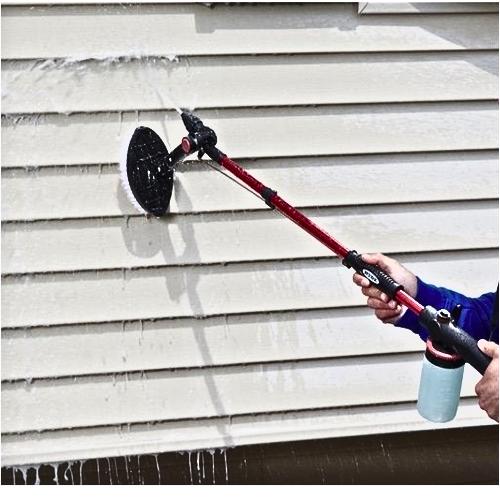
Properly primed and painted cedar siding should not need to be refinished often. Especially if you maintain a good cleaning schedule.
Mold, mildew, fungus, salt, and air pollution all contribute to deteriorating the life of exterior paint. Cleaning painted cedar siding every year or two will not only keep it looking it’s best but will aid in getting the longest life from the paint.
Remove loose dirt and debris from the painted surface with a garden hose or pump sprayer.
Using a weakened solution of oxygen bleach (we suggest half strength) apply from bottom to top then clean with a soft-bristled brush from top to bottom. Rinse thoroughly several times.
If you’re putting a fresh coat of paint over paint that is in good condition, use the above cleaning method. The surface needs to be very clean, thoroughly dry, with no chalky residue before you paint.
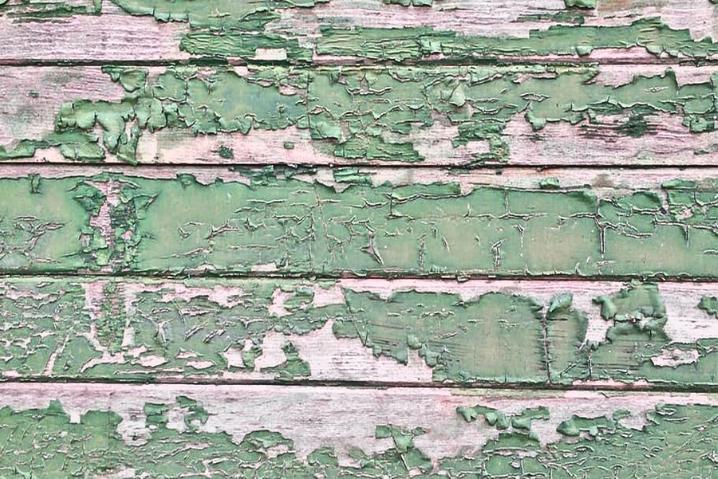
If your paint is peeling, flaking, has excessive bubbling, or cross-grain cracking, you should remove the old paint before re-painting to prepare a clean, even foundation to lay the new coat of paint. This will usually involve a chemical stripping process.
Naturally Weathered Cedar Siding
If your cedar siding is weathering to a beautiful silvery-gray naturally, with no product, a yearly general cleaning will really help with the weathering process. Keeping the wood clean allows the UV light to do its job better, and more evenly.
Power Washer
We don’t suggest using a power washer unless you have experience cleaning wood siding with one.
This method comes with several caveats.
- It needs to be held no less than 6 inches from the wood, at an angle no fewer than 15 degrees, to keep from creating pock marks in the wood.
- Use a nozzle that hits the full width of the board so the pressure is diffused.
- Keep the pressure significantly lower to prevent ruining the wood siding.
WARNING: When using a power washer, having the pressure up too high has caused more wood to be ruined beyond the point of repair than any other single thing I have seen in my career. If you’re going to pressure wash you have to be extremely careful of the pressure itself. The pressure level used must be significantly lower on wood siding.
Chlorine Bleach
You don’t want to use chlorine bleach on your wood. It can damage the wood fibers making it prone to surface splintering and premature aging. Chlorine bleach is powerful enough to remove wood’s natural color and it’s toxic to plants, humans and animals.
Detergents
I’ve been asked if a detergent-type cleaner can be used on wood siding. The thing is, detergents can be any combination of chemicals, even some unknowns.
Oxygen bleach works every time. Purchase oxygen bleach manufactured in the USA without fillers; they aren’t necessary to the cleaning process.
To recap how to clean cedar siding:
Whether you’re doing a deep clean or general clean, work in the shade, on a cloudy or cooler day. Work in manageable sections. You don’t want the solutions to dry on the wood before you’ve scrubbed or rinsed.
You want to deep clean your cedar siding before refinishing it, using oxygen bleach and oxalic acid. If possible, select a stain finish that will allow you to use this method of cleaning. It’s economical and can be done fairly quickly.
Water-based stains require toxic strippers and a more laborious process for cleaning.
Before you resort to sanding your wood siding to remove gray oxidation, cleaning with oxygen bleach and oxalic acid should remove the gray and restore the wood’s natural color.
Each year you want to give your cedar siding a general cleaning to remove dirt and grime, and brighten your siding.
We can’t emphasize enough how important it is to thoroughly rinse oxygen bleach and oxalic acid from the wood once they’ve done their job. Rinse, rinse, and rinse, again!
A good hosing-off anytime of the year will remove loose dirt and debris from your wood siding, making your yearly cleaning that much easier. Clean cedar makes the color pop and brings out the luster of the wood, adding to your curb appeal.
Key Tips For Cleaning & Enhancing Cedar Siding:
- Make it a habit to inspect your cedar siding annually, If there is an issue, you should address it as soon as you can. A little 2-hour labor now will save you time. Waiting for another year might worsen the problem and you will be spending more time and money in the process.
- Remove loose surface dirt from the wood siding, apply Oxygen Bleach from the bottom up, scrub/rinse the solution from the top down. This way, the cleaning agent will be able to do its work without leaving any streak marks behind.
- Condition your cedar siding using Oxalic Acid. Oxalic acid restores the PH balance of the wood siding, making it ready to accept the coating of stain so it can adhere properly.
- Rinse, rinse, rinse and then rinse again. Thoroughly rinse between each application of Oxygen Bleach and Oxalic acid to keep everything healthy and clean.
- Choose your stain carefully. Contact the tech department of the chosen stain and ask about the cleanup process for re-finishing.
- Stain from the top down OR from top corner across. For siding installed vertically, stain from the top down. For horizontally installed siding, start at the top corner, moving across. Always stain in a continuous motion and avoid overlapping.
And there you have it, wood-lovers, straight from the Buffalo's mouth. Remember to follow this guide and enjoy your well-maintained cedar siding.
How to Prevent and Remove Mold from Cedar Siding is an informative read if mold on your siding is an issue.
Let us know how this worked for you and tag us in your social media posts! And if you need help with your cedar siding project, contact us here.






